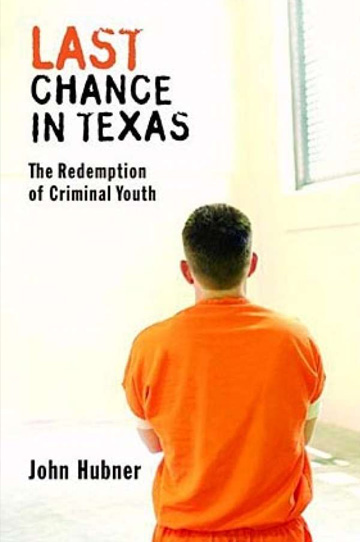The centerpiece of the state’s juvenile program is the Giddings State School, home to teenage murderers, rapists, kidnappers and armed robbers. If the crimes committed by the school’s students are shocking, no less so are the low recidivism rates Giddings produces compared with traditional juvenile detention centers. Only 3 percent of the graduates of Giddings’ hallmark “capital and violent offenders” rehabilitation program were rearrested for violent crimes in the year after being released. And only 10 percent were rearrested in the first three years. That’s half the rate of violent offenders in other Texas programs.
The school’s success hinges on a controversial experiment in group therapy. Students, in teams of 10, spend their days in a room with psychologists, exploring dark pasts. Each student tells a comprehensive “life story,” focusing on the abuse he suffered as a child, and then a “crime story, ” recounting the violent offense that led him to Giddings. At any sign of disingenuousness or downplaying responsibility, the subject faces aggressive questions from therapists as well as impatient peers, who balk at “fronting” (as feigned earnestness is called). In a dramatic climax to both the life and crime segments, the group acts out the subject’s childhood beatings and neglect, and then his callous offense, with the subject alternately forced to play himself as well as his victim.
John Hubner, a San Jose journalist, follows two students through Giddings in “Last Chance in Texas: The Redemption of Criminal Youth.” Ronnie, who as a boy was tortured regularly by an aunt while his mother was off snorting cocaine, broke into a house and, finding too little to steal, kidnapped the husband and drove to a bank to force him to empty the family’s savings account. Elena, who was raped by her stepfather and has 12 siblings in prison, joined fellow gang members in robbing an antiques store, severely beating the store’s gay co-owners as well an elderly employee, with whom Elena had frequently exchanged smiles on a bus. Both she and Ronnie successfully completed the rigorous Giddings program; under Texas’s sentencing laws, that meant avoiding decades in prison and being released to a second chance at life.
The scenes from the therapy room that Hubner recounts are intense, filled with shouting, tears and emotions stripped utterly bare. Perhaps the most striking feature is the students’ vulnerability — their undeniable childishness — when all the brutal layers are peeled away. Ronnie, as tough on the streets as anyone, spent most of the role play after his life story sobbing. Tran, a Vietnamese American whose uncle kept him in chains while he was away at work, asked to be comforted by another boy, Dwayne, who didn’t even realize that Tran thought of him as a friend. After holding Tran through a tearful moment, taciturn Dwayne opened up and engaged with the other students as never before. These images, like soldiers tenderly consoling one another on the battlefield, are moving precisely because we think of some people as hardened beyond basic human emotions. Yet few of them really are.
Nonetheless, Giddings officials are realists, and they know that the group sessions, cathartic though they may be, are not panaceas. The ultimate purpose of the crime stories is to reawaken the students’ sense of empathy and personal responsibility by forcing them to confront their crimes and realize how much pain they have inflicted. Humble sessions with the parents of murdered children also serve this end. But some young offenders are deemed beyond helping, and Giddings therapists have no compunctions about expelling them to serve their full sentences in adult prisons.
Hubner intersperses the students’ stories with a broader exploration of the debate over whether to rehabilitate or punish juvenile offenders. He neither hides his disdain for tough “superpredator” youth sentencing policies nor his incredulity that some prefer letting juveniles stew in a prison cell and then releasing them, rather than making some effort at treatment. He confronts critics who complain of Giddings’s high price tag by comparing the cost of treating an offender there for three years with holding him for 30 years in a penitentiary. And he answers the charge that young thugs do not deserve a second chance with evidence that children are biologically and developmentally less capable — although not incapable — of appreciating the impact of their behavior.
The book is not without its warts. More context would have been helpful on the psychological community’s appraisal of Giddings’ methods (the American Psychological Association dislikes seeing therapists role-playing with subjects), as would a broader portrait of life at the school outside the group sessions. Moreover, while Hubner’s narrative is compelling, he occasionally lapses into the students’ chafing argot (Ronnie’s younger brother “started bawling again, real loud”) and assembles several perplexing similes (two therapists were “a team, as fused as referees in the National Basketball Association”).
Still, on balance the book is a success, a sensitive and compelling case for attempting to treat young offenders before punishing them, and a reminder of the horrific abuse that turns children into violent teenagers. If “Last Chance in Texas” would lead other states to follow Texas’ lead, we might have fewer full-grown criminals to fear.
